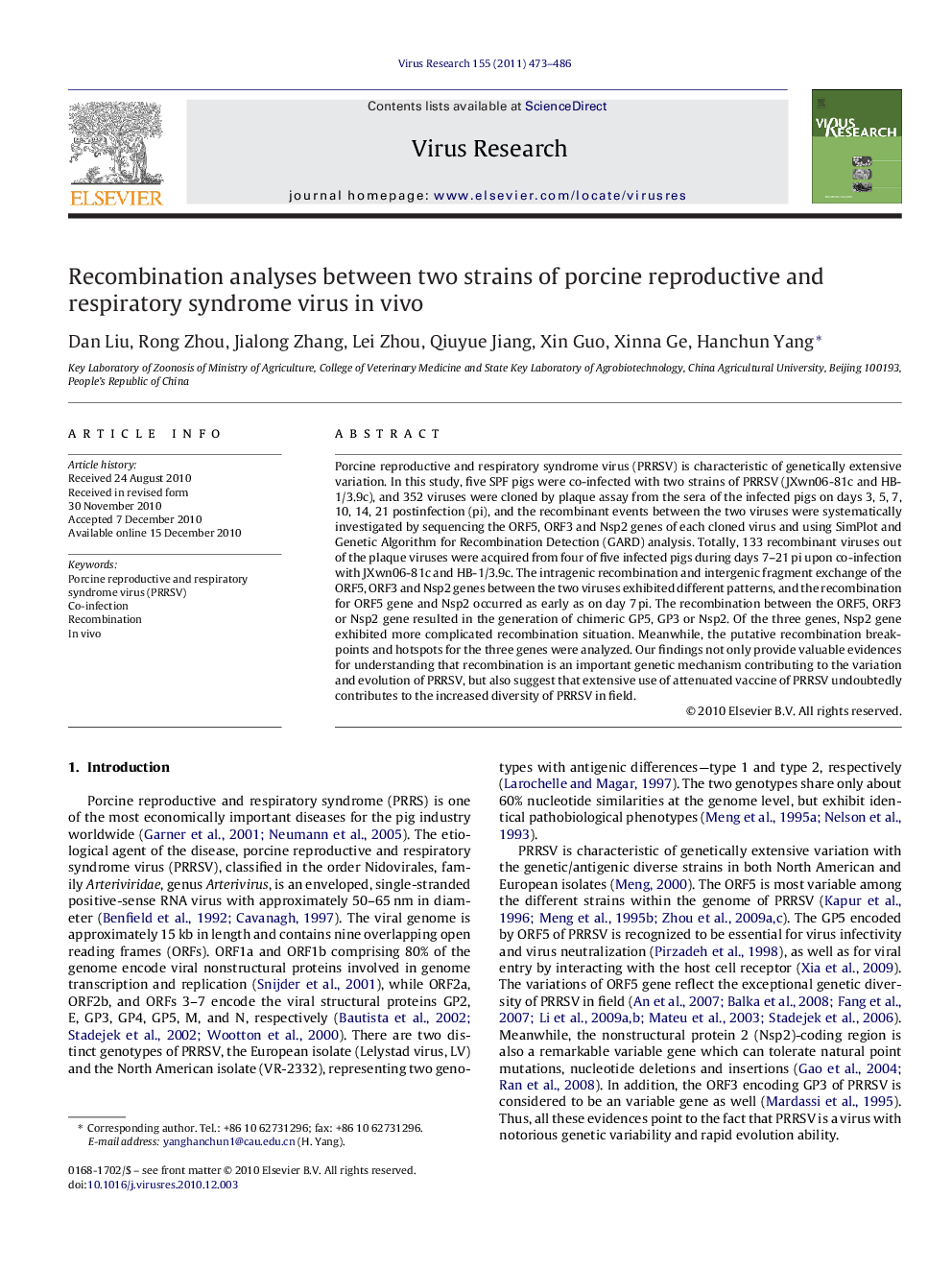| Article ID | Journal | Published Year | Pages | File Type |
|---|---|---|---|---|
| 3429445 | Virus Research | 2011 | 14 Pages |
Porcine reproductive and respiratory syndrome virus (PRRSV) is characteristic of genetically extensive variation. In this study, five SPF pigs were co-infected with two strains of PRRSV (JXwn06-81c and HB-1/3.9c), and 352 viruses were cloned by plaque assay from the sera of the infected pigs on days 3, 5, 7, 10, 14, 21 postinfection (pi), and the recombinant events between the two viruses were systematically investigated by sequencing the ORF5, ORF3 and Nsp2 genes of each cloned virus and using SimPlot and Genetic Algorithm for Recombination Detection (GARD) analysis. Totally, 133 recombinant viruses out of the plaque viruses were acquired from four of five infected pigs during days 7–21 pi upon co-infection with JXwn06-81c and HB-1/3.9c. The intragenic recombination and intergenic fragment exchange of the ORF5, ORF3 and Nsp2 genes between the two viruses exhibited different patterns, and the recombination for ORF5 gene and Nsp2 occurred as early as on day 7 pi. The recombination between the ORF5, ORF3 or Nsp2 gene resulted in the generation of chimeric GP5, GP3 or Nsp2. Of the three genes, Nsp2 gene exhibited more complicated recombination situation. Meanwhile, the putative recombination breakpoints and hotspots for the three genes were analyzed. Our findings not only provide valuable evidences for understanding that recombination is an important genetic mechanism contributing to the variation and evolution of PRRSV, but also suggest that extensive use of attenuated vaccine of PRRSV undoubtedly contributes to the increased diversity of PRRSV in field.
